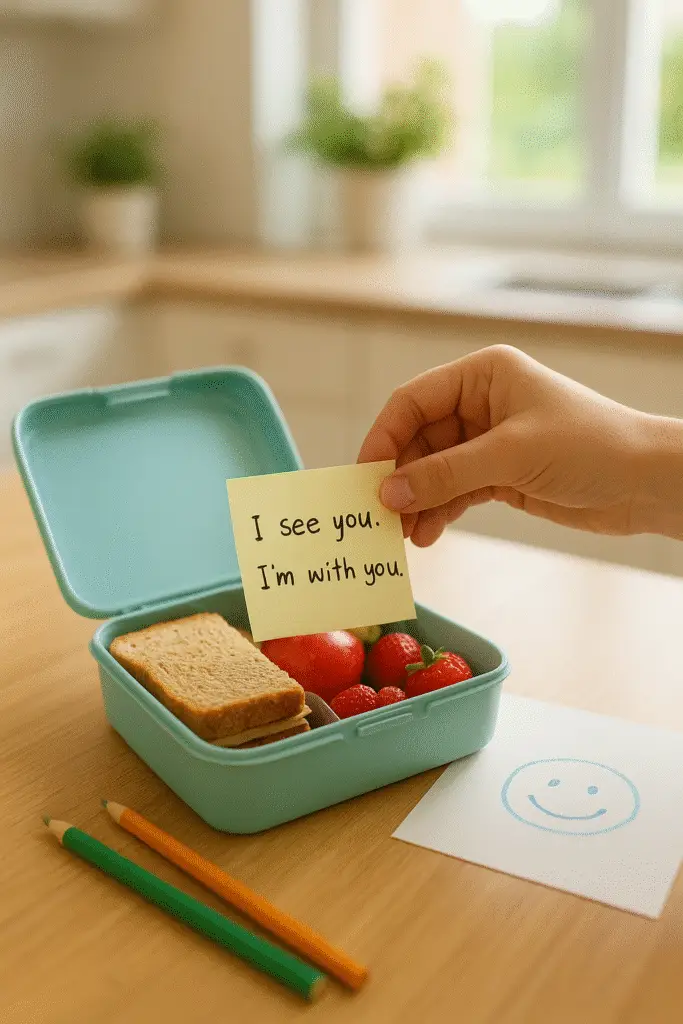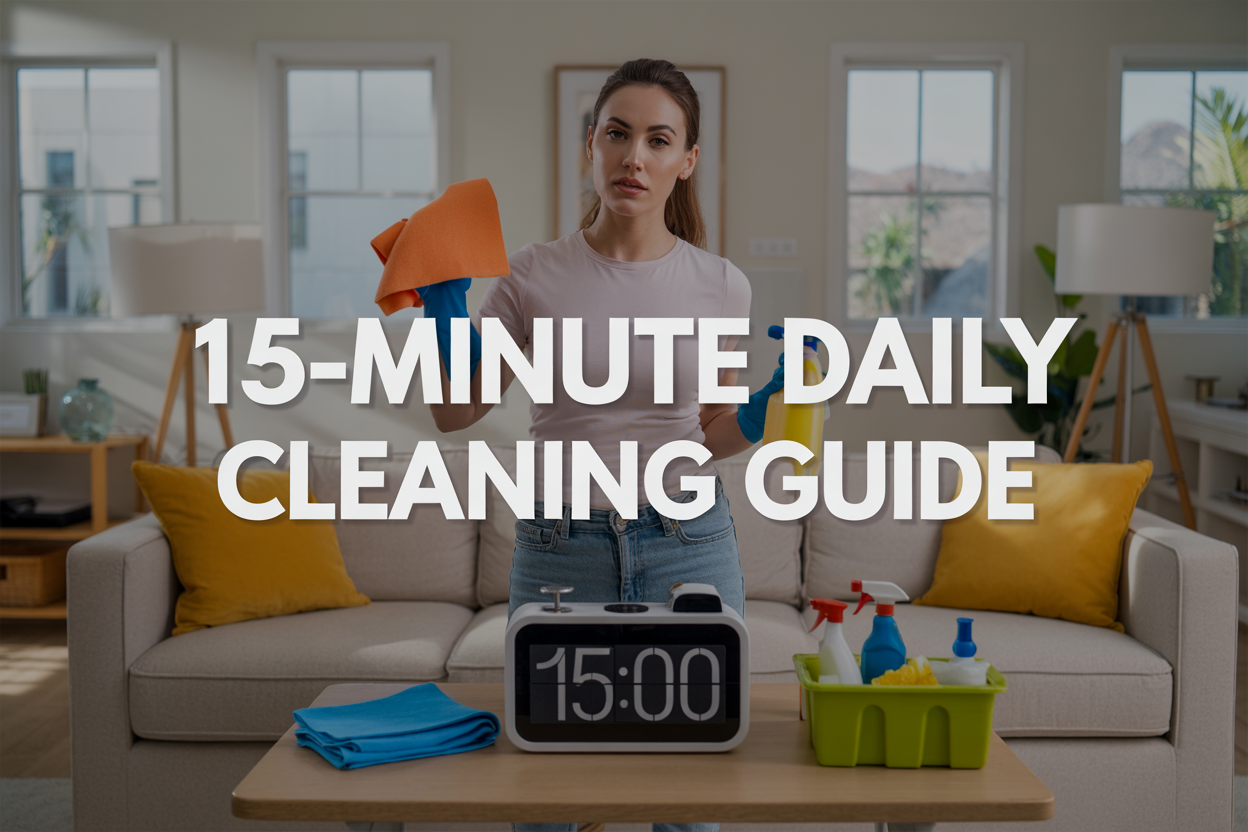💌 How Leaving Notes in Your Child’s Lunchbox Can Boost Their Emotional Intelligence

Every parent wants their child to grow up confident, kind, and emotionally aware—but emotional intelligence doesn’t come from lectures.
It grows in small, consistent moments of connection.
Tucked inside that swirl of lunchboxes and school chatter sits one small lever you actually control: a handwritten note.
Not a masterpiece, not a lecture—just a few words that tell your child, “I see you. I’m with you. Feelings belong at the table.”
🏫 A Lunchroom Moment That Says It All
The cafeteria hums the way only schools can—metallic clatter, squeaky shoes, quick stories.
I once watched a boy dig past grapes and crackers until he found a folded square:
“Big test today. I felt wobbly on my spelling when I was your age. One slow breath, then another. You’ve got this—no matter what.”
His shoulders dropped. He chewed more slowly. He read it again and placed it beside his milk like a talisman.
A note can be more than cute—it can be coaching.
Lunch went on, as lunches do. But something in him shifted. That paper square became a small lesson in emotional regulation.
💡 Why Lunchbox Notes Build Emotional Intelligence
Lunchbox notes are micro-moments of co-regulation.
In the middle of a noisy day, they whisper, “You’re safe. You’re seen.”
When a child reads a short message that names a feeling or offers a small coping skill, they’re practicing— the core skills of emotional intelligence (EQ):
- 🧠 Noticing emotions
- 💬 Labeling emotions
- 🧩 Responding with awareness
It’s not the ink—it’s the ritual that teaches emotions are natural, nameable, and workable.
💬 A Real Example: How Notes Change the Day
Maya, age nine, dreaded recess because “Teams get picked, and I hate the waiting.”
Her dad started sending notes on Mondays:
“Today might bring a pinch of waiting. Try the ‘five-count scan’: spot five red things while you wait.”
Two weeks later, Maya said, “The pinch feels smaller.”
Teachers often notice the same thing. When kids practice naming and managing emotions, meltdowns dip. Small conflicts fade faster.
🧩 Research on social-emotional learning (SEL) confirms this—repeated, bite-sized practice builds stronger emotional habits than one big talk.
🧠 The Science Behind It
Words give shape to the swirl.
When a child reads, “Nervous feels tight in your belly,” their brain links sensation to language. That small label lowers emotional arousal ——the name it to tame it” principle therapists use.
Consistency matters too. A daily or weekly note becomes a predictable bridge to you, and predictability builds calm.
A tiny ritual becomes a big anchor.
✍️ How to Write Lunchbox Notes That Actually Build EQ
Think in three quick beats: See. Name. Nudge.
- See: Reflect something real — “Group project today.”
- Name: Add a feeling — “Might feel excited or unsure.”
- Nudge: Offer one small skill—”Try one breath in for four, out for six.”
Short, honest, and specific beats perfect.
Add a doodle, smiley, or tiny rocket. You’re not writing poetry—you’re giving comfort and coaching in 15 seconds.
🚫 Avoid Pressure Notes
Your note doesn’t need to fix feelings—it just needs to hold them.
Avoid:
- “Be the best!” (adds pressure)
- “I heard what you did yesterday” (feels like surveillance)
Instead, swap outcome praise (“Great grade!”) for process praise (“You kept at the tricky part”).
And remember: you don’t have to write one every day.
Two a week is plenty. Miss a week? Fine.
It’s the pattern, not perfection, that matters.
💌 Real Note Starters for Tired Mornings
Try these when your brain’s on autopilot at 7 a.m.:
- “If math feels spiky, try 3-2-1: three breaths, two shoulder rolls, and one sip of water.”
- “Today’s new thing might feel weird; weird is how we grow.”
- “If someone’s loud, imagine their volume knob—then turn yours down.”
- “One kind thing to someone lonely counts double.”
- “What feeling showed up at lunch? Name it after school.”
🌈 Beyond the Sandwich: Ripple Effects You’ll Feel
Stick with it, and you’ll see the small shifts:
- Your child starts naming emotions earlier: “I’m frustrated, not furious.”
- They borrow your calm language: “I did the five-count scan, and it worked.”
- Siblings ask for their own notes.
- The after-school car ride softens—less interrogation, more sharing.
Tiny rituals change the weather of a day.
A calmer lunch leads to a calmer afternoon, and calm stacks over time.
Not magic—just practice.
📋 Quick Recap: Core Takeaways
| Key Step | What to Do | Why It Matters |
|---|---|---|
| Label the feeling | Use one clear word tied to the moment (“nervous before art”) | Builds emotional vocabulary |
| Offer one skill | Breathing, body scan, “ask for help” | Teaches self-regulation |
| Keep it ritual, not perfect | 2–3 notes a week, 1–2 sentences | Keeps the habit sustainable |
❤️ Final Thought
A lunch note is a pocket-sized check-in that says:
“I see you, I’m with you, and you’ve got tools.”
Over time, those tiny notes become something bigger—an emotional safety net your child carries into every classroom, playground, and challenge.
Key Takeaways
- Handwritten notes in lunchboxes foster emotional intelligence by creating moments of connection between parents and children.
- These notes help children recognize, label, and manage their emotions efficiently.
- Routine use of lunchbox notes encourages emotional regulation and makes feelings manageable.
- Parents should focus on simple messages that reassure and guide, avoiding pressure or surveillance.
- Over time, consistent lunch notes can transform a child’s emotional habits and build a stable emotional foundation.
FAQ
They help at any age. For tweens and teens, shift tone: less cute, more collaborative. Think “You’ve got a tough scrimmage—what’s your reset move?”
Use drawings, color codes, or simple emojis tied to feelings. A blue dot for “calm breath,” a heart for “you’re loved.” Ritual beats vocabulary.
Eye-rolls are often a shield. Keep notes light and optional. Ask later what format they prefer—sticker, doodle, joke, or question.
Start with twice a week. Pair it with a routine (Monday, Thursday). Consistency matters more than frequency.
It can if it amplifies fear. Keep language normalizing and skill-focused: “A flutter is normal. Try box breathing: 4 in, 4 hold, 4 out, 4 hold.”










